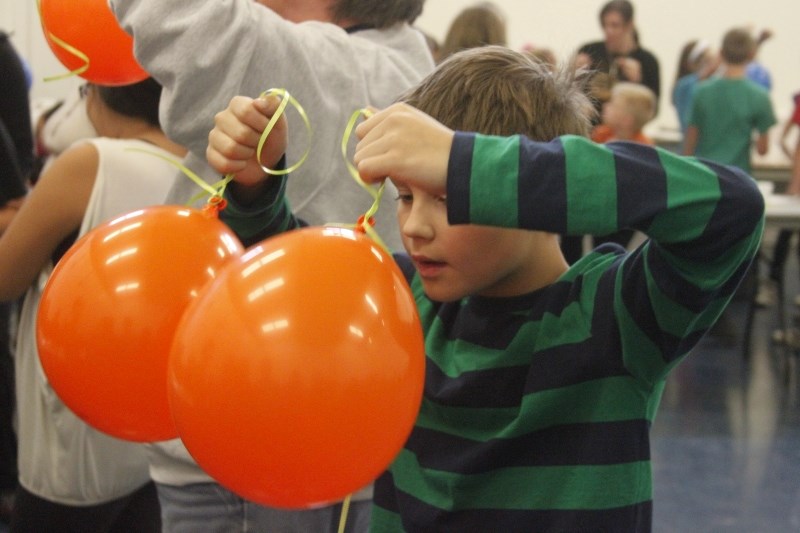“Five! Four! Three! Two! One!” The Grade 6 kids at Dr. Swift Middle School shouted excitedly as they counted down the seconds—with video cameras on the doors to make sure no one entered or exited, this was their chance to go down in history. A whistle blew and their science teacher, Carolina Beniuk, started the first of two science experiments that might see the 120 Lac La Biche scholars in the pages of the Guinness Book of World Records.
At 11 a.m. on Friday Oct. 12, schools around Canada turned on video cameras and closed lunchroom and gymnasium doors, in the attempt to set a record for the most students participating in a practical science lesson.
“There are a lot of guidelines to follow,” Beniuk said. “I didn’t realize when I started organizing it that it would be this much!”
Unable to use the school’s gymnasium because it held too many doors to videotape to Guiness’ specifications, Beniuk commandeered the lunchroom and set the tables into a wide U shape to accommodate the little scientists and their materials. Each student was given a ticket stub to hand to an official counter as they filed past on their way in, and while the experiments were underway parent volunteers went around recounting the students again.
“We did a lesson on Bernoulli’s principal,” Beniuk explained. “We did two experiments. One called kissing balloons, where you take two balloons on strings, and blow air between them. Because of the decreased pressure, they actually move together rather than apart. The second experiment is the same principle [of low versus high air pressure.] The kids have a cup of water with one straw in the water. You hold another straw and blow across the straw in the water, and the water inside the straw actually comes shooting out because of the high versus low pressure air.”
While the kids enjoyed the balloon experiment, it was the straw experiment that the young scientists really enjoyed.
At the end of the experiment, Beniuk discussed what Bernoulli’s principal had meant to the world—the low/high air pressure feat of airplane flight—and what the students had learned through their experiments.
Beniuk said that while the possibility of getting into the Guinness Book of World Records would be nice, the real reason why she decided to participate in the record-breaking challenge was to encourage her students’ interest in science.
“Science is fun,” she said.
And judging from the laughter and cheers of the students in Dr. Swift’s lunchroom on Friday, her students couldn’t agree more.
It will take Guinness officials a few months to wade through all the footage and paperwork entered by the hundreds or thousands of schools that are vying for the record.



